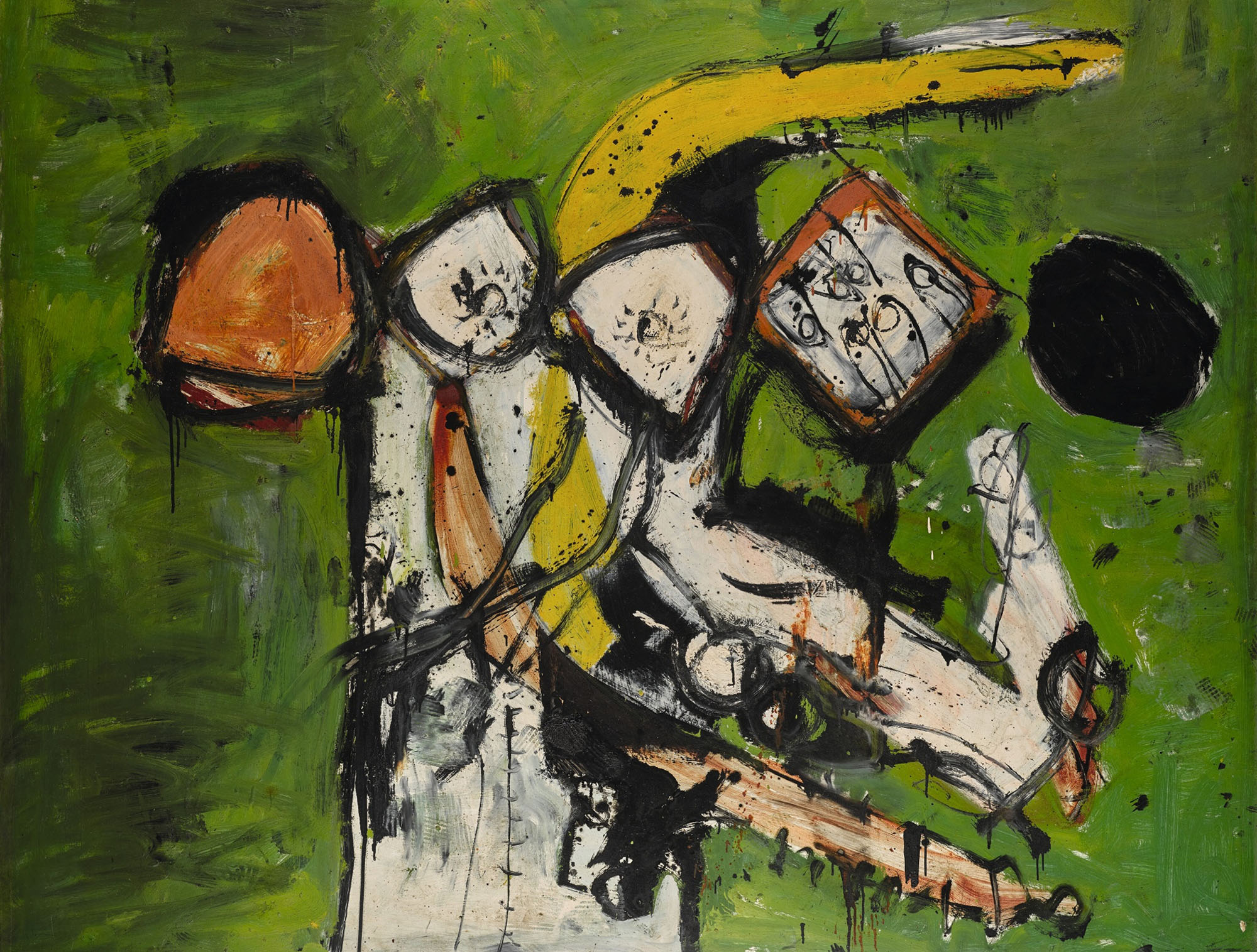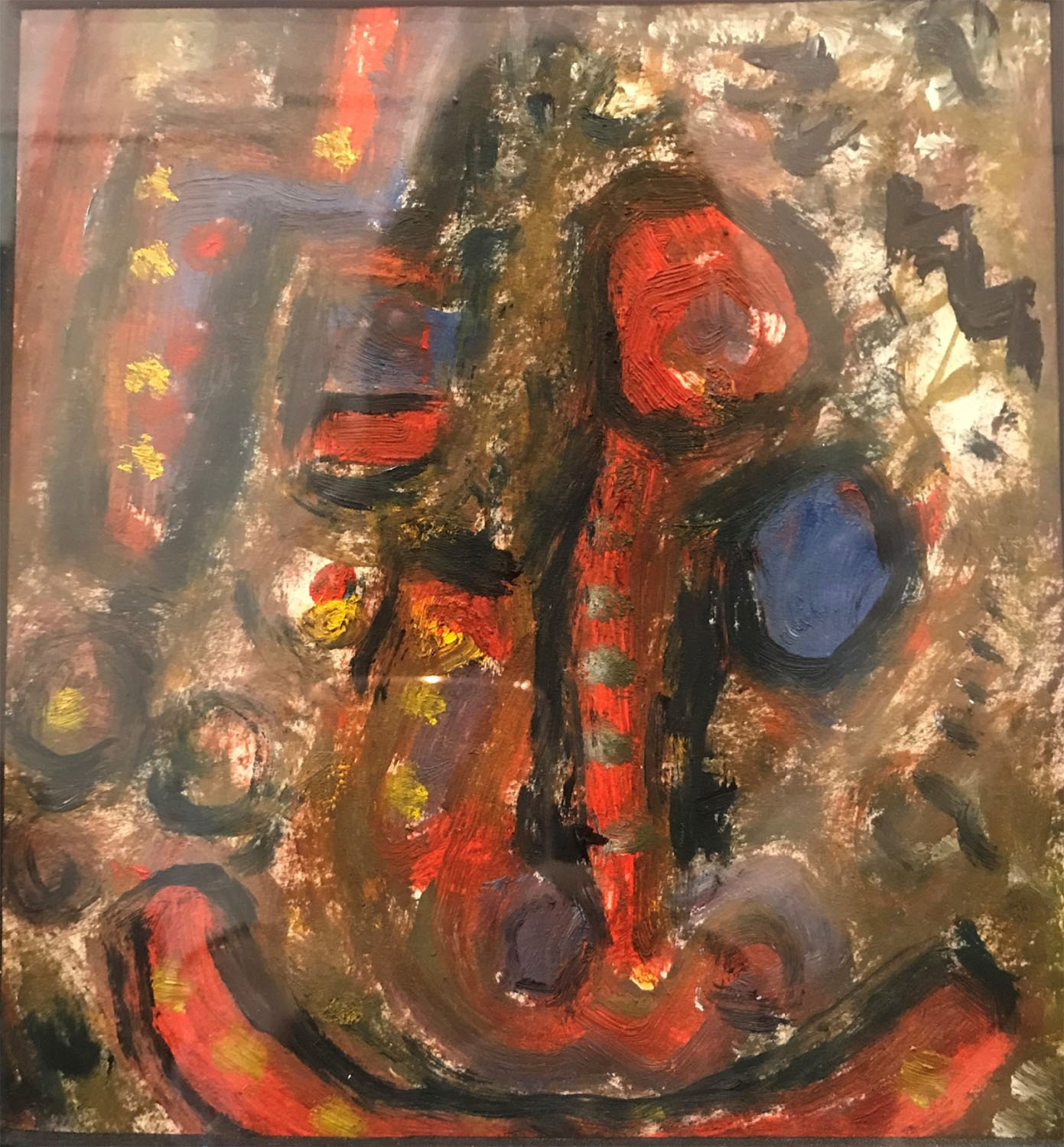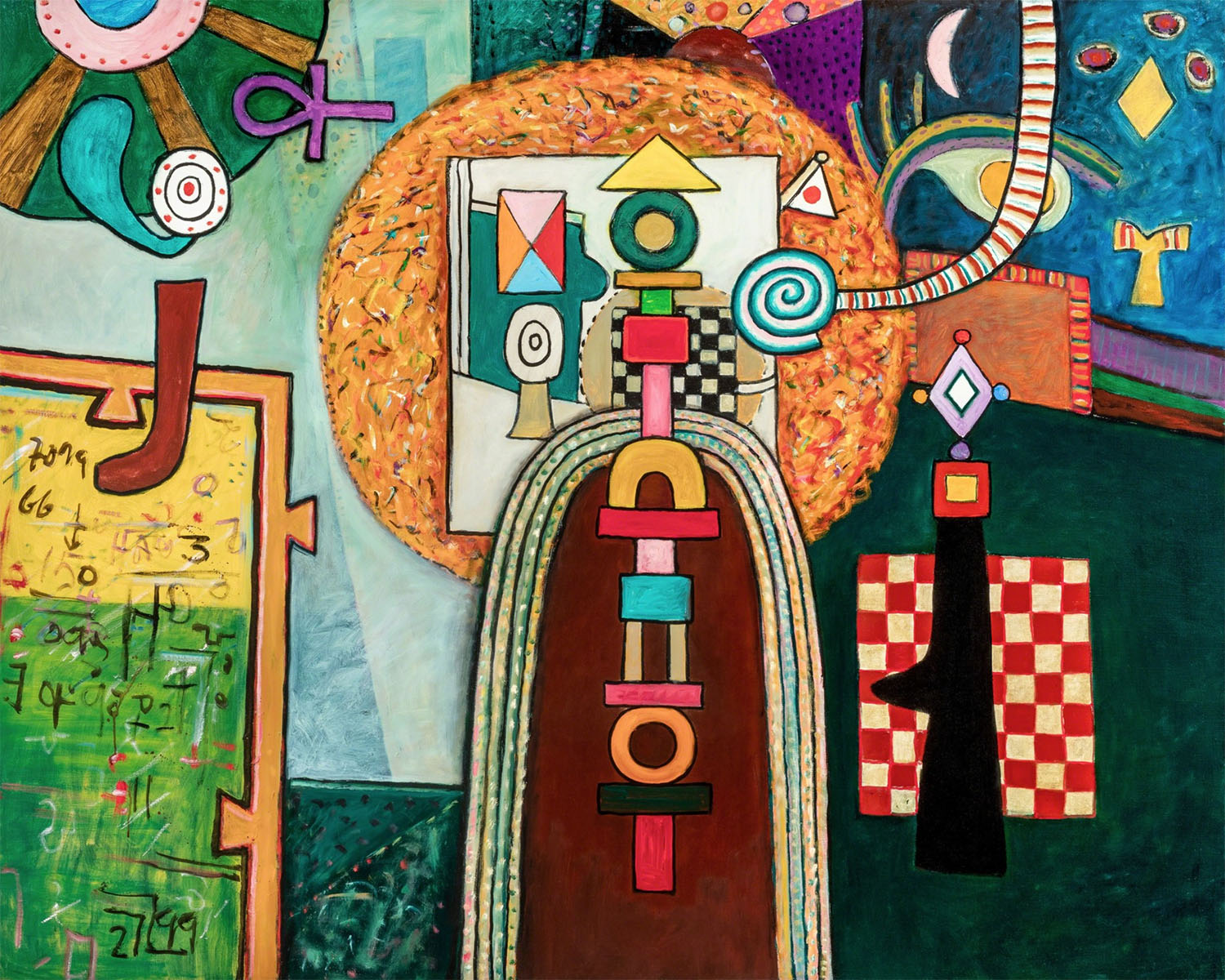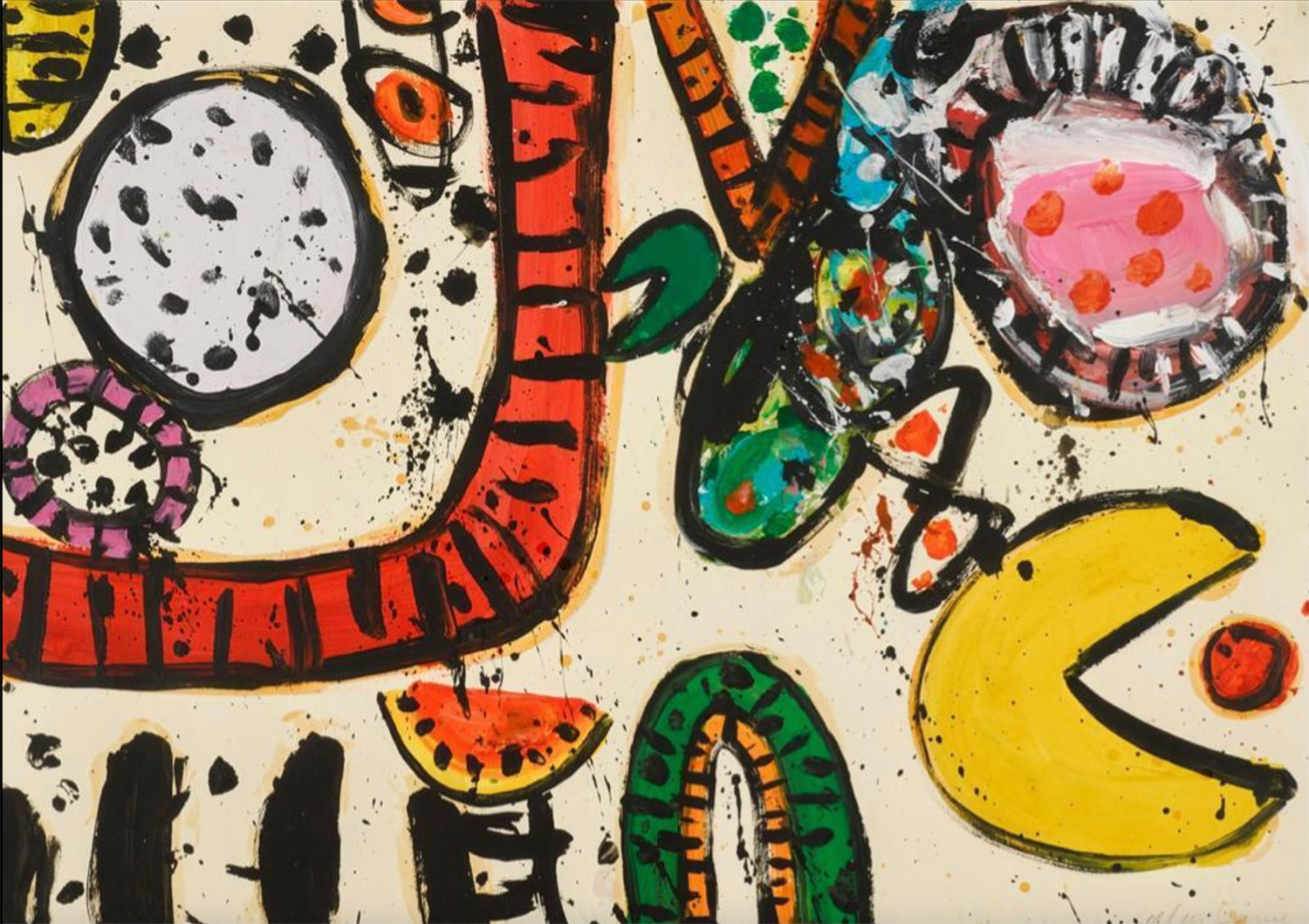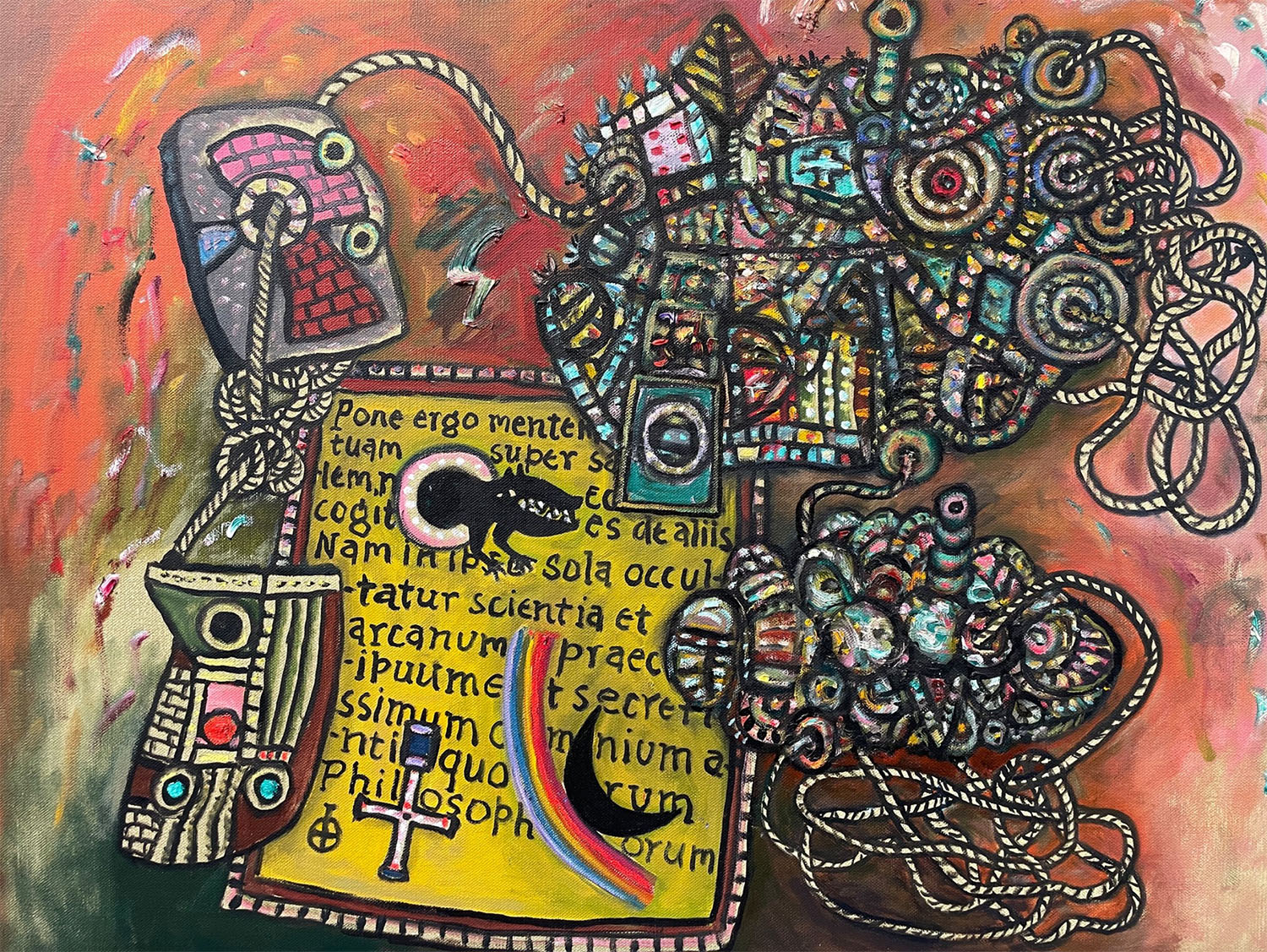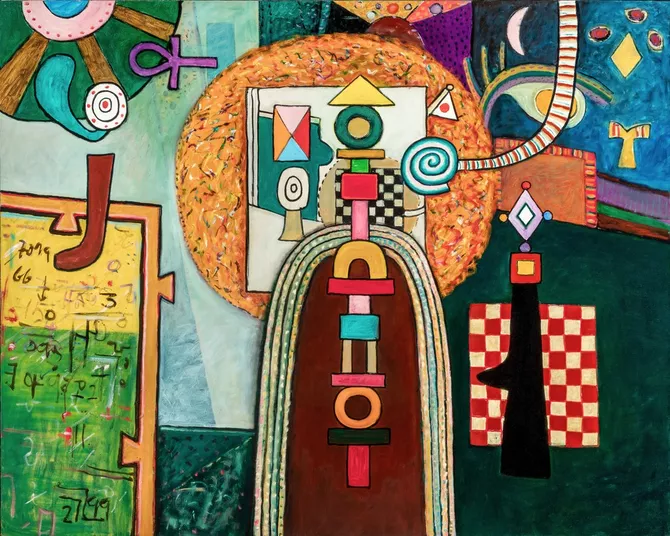Alan Davie
British, 1920–2014
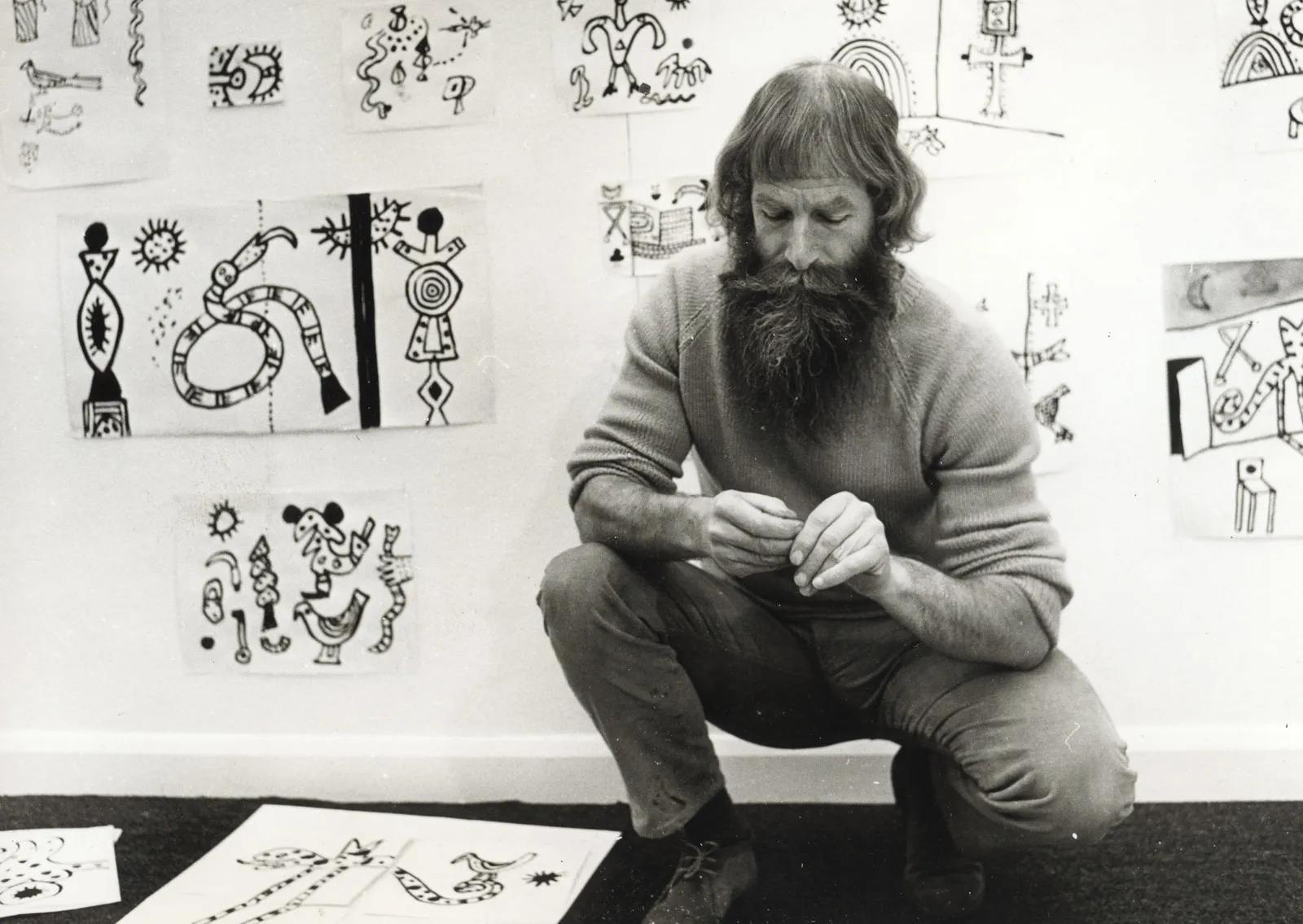
Drawing inspiration from references ranging from Abstract Expressionism to global traditional art, Alan Davie’s eclectic oeuvre reflects his interest in Zen Buddhism, Jungian psychoanalysis, and jazz music.
Davie represented Britain at the São Paulo Bienal in 1963, and retrospectives of his work were held at the Barbican Centre in 1993 and Tate St Ives in 2003. Davie was awarded a traveling scholarship from his alma mater Edinburgh College in 1941, but his plans were delayed until the end of World War II.
Following his military service, he traveled to Italy in 1948, where he encountered works by Renaissance masters in Florence and Arezzo; in Venice he was introduced to Peggy Guggenheim’s preeminent collection of American modernism. Particularly influenced by Jackson Pollock’s intuitive style of painting, Davie sought to free himself from premeditated markmaking.
His process was inspired by improvisational jazz and his interest in Carl Jung’s vision of a collective unconscious. Depicting archetypal symbols and recurring shapes, his work conjures primal, mystical associations.

